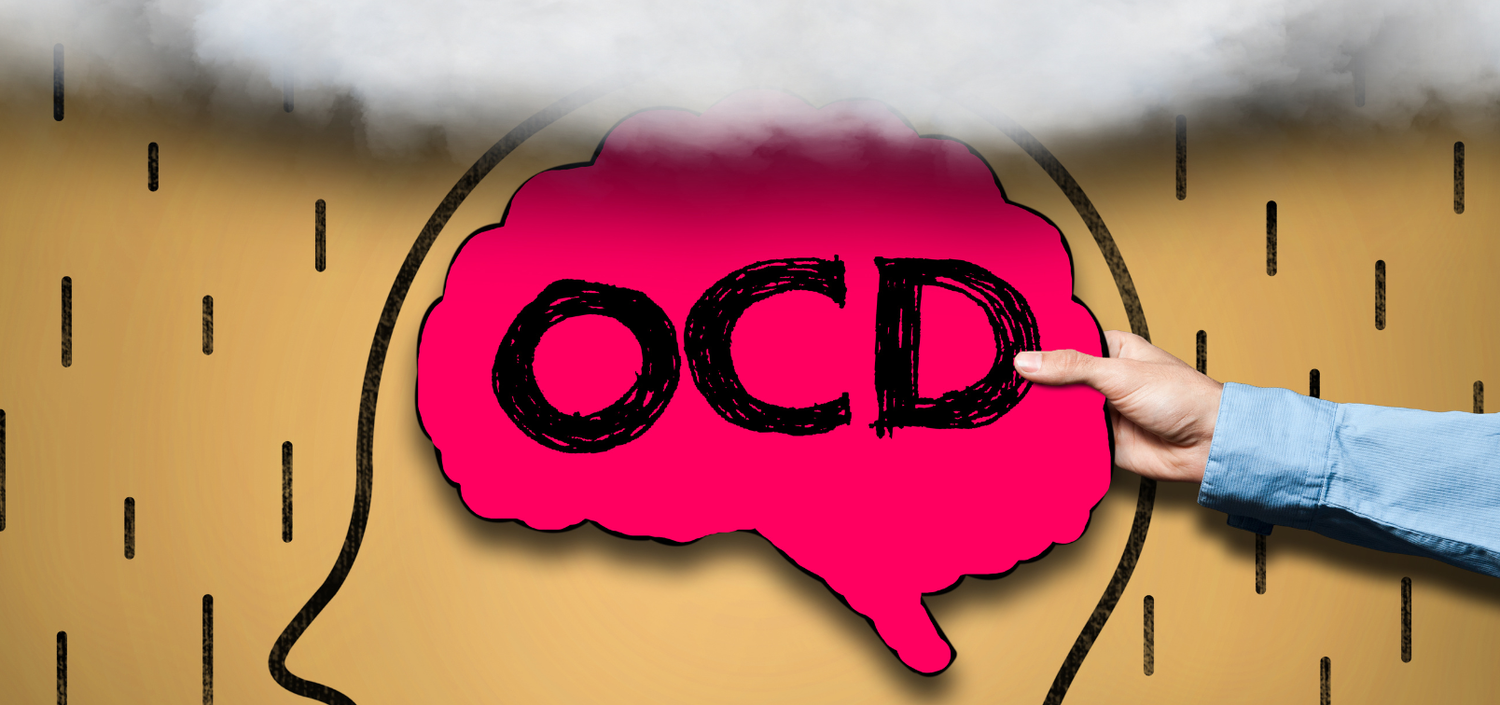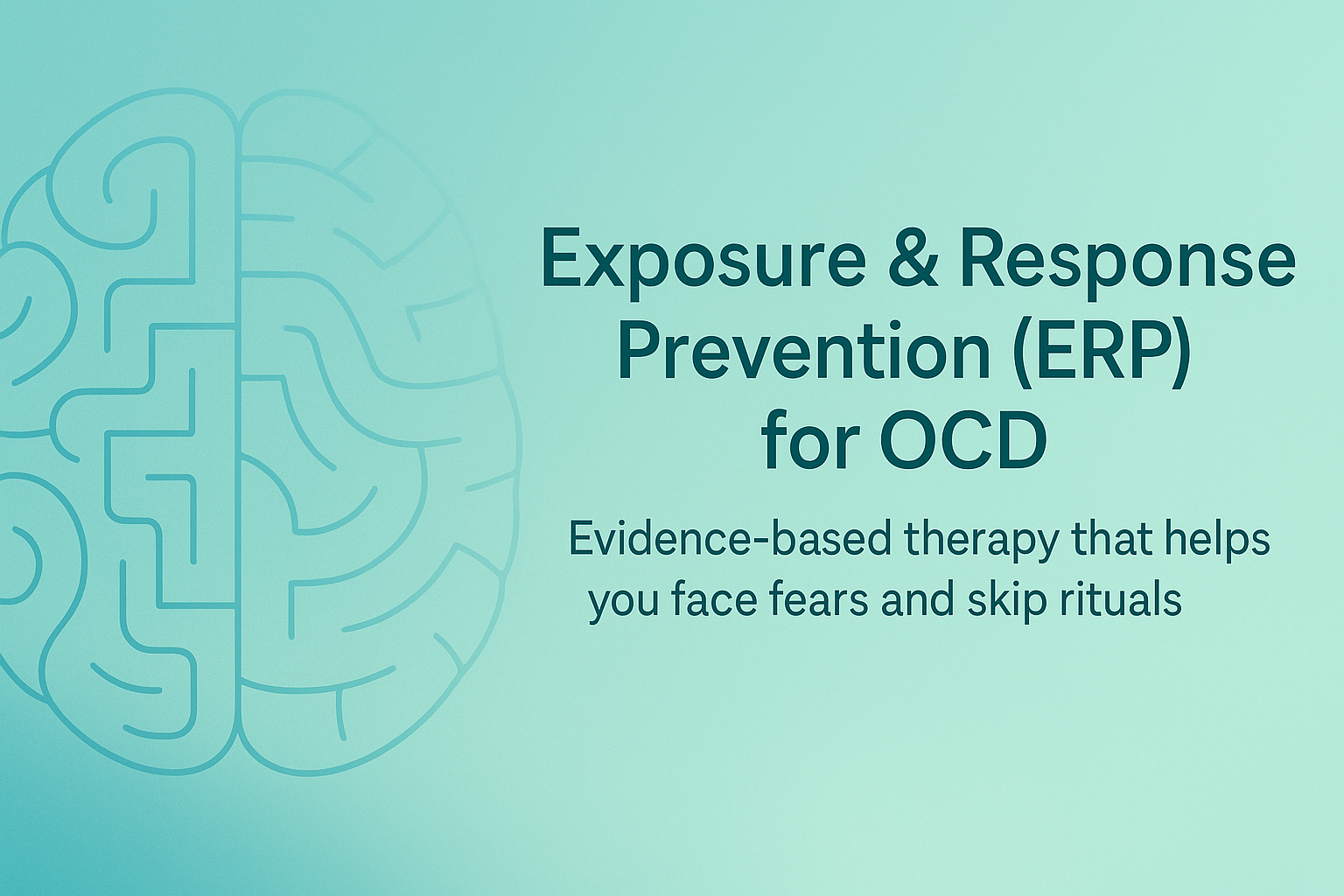ACT for OCD: What It Is and How It Helps
Summary
Acceptance and Commitment Therapy (ACT) teaches you skills to make room for difficult thoughts and feelings and take values-based action—even when OCD shows up. Instead of trying to eliminate intrusive thoughts, you learn to relate to them differently (less struggle, more choice). ACT often pairs beautifully with Exposure and Response Prevention (ERP).
Why ACT for OCD ?
OCD pushes you to chase perfect certainty and comfort. The chase (compulsions, avoidance, reassurance) eats time and shrinks life. ACT builds psychological flexibility—the capacity to stay present, open up, and move toward what matters, with or without anxiety.
Psychological flexibility grows through six teachable processes (the “hexaflex”):
- Present-moment awareness – noticing what’s happening right now
- Cognitive defusion – seeing thoughts as thoughts, not facts or commands
- Acceptance – willing to have inner experiences without unnecessary struggle
- Self-as-context – the perspective that notices experiences without being overwhelmed by them
- Values – clarifying who/what matters to you
- Committed action – taking small, consistent steps guided by values
ACT vs. ERP (and why they work well together)
- ERP targets the behavioral loop of OCD: you face a trigger and don’t do the ritual.
- ACT targets your
relationship with inner experiences: you can feel anxiety/uncertainty and still choose your values.
Together: ACT skills help you show up for ERP and stick with response prevention without turning coping strategies into new rituals.
What does an ACT-informed OCD session look like ?
- Map the struggle: what you’ve tried (rituals, checking, mental review), what it costs you, and what you care about.
- Skill practice: brief exercises in noticing, defusion, and willingness.
- Values check: identify 1–2 directions that matter (e.g., presence with family, creative work, integrity).
- Tiny commitments: 5–15 minute actions aligned with values that you can do with discomfort present.
- (When combined with ERP): we design exposures and use ACT skills to carry them out without rituals.
Core ACT skills for OCD (with quick exercises)
1) Present-moment awareness
Why: OCD pulls you into future “what ifs” or past review.
Try this (1 min): Name 5 things you can see, 3 you can hear, 2 you can feel on the skin. Then ask: “Given this moment, what’s the next small helpful step?”
2) Cognitive defusion
Why: Fused with a thought = you treat it as a fact.
Try this (30 sec): Prefix the intrusive thought with, “I’m noticing the thought that…” Repeat it slowly, even in a silly voice. Notice the urge drop a notch.
3) Acceptance (willingness)
Why: Fighting anxiety tends to amplify it.
Try this (2 min): Breathe into the area of tightness. On the out-breath: “Make space.” Let sensations come and go while you stay where you are.
4) Self-as-context
Why: You’re more than today’s spike.
Try this (30 sec): “I’m the person noticing this thought and this urge.” Imagine sitting on a riverbank as thoughts float by.
5) Values
Why: Values give you a
compass when certainty is impossible.
Try this (3 min): Pick one domain (relationships, health, learning, service). Write one sentence: “In this area, I want to be the kind of person who…”
6) Committed action
Why: Life expands through small, reliable steps.
Try this (5–15 min): Do one values-aligned action
while allowing the intrusive thought to be there (e.g., read with your child even if doubt is present; send the email without rereading 10 times).
How ACT reduces compulsions (without arguing with content)
- You notice the obsession and urge (present-moment)
- Name it as a thought/feeling (defusion)
- Allow the discomfort (acceptance)
- Choose a step that serves your values (committed action)
Repeat consistently: the thought loses power, and your life grows around it.
Examples by OCD theme
Checking OCD
- Defusion: “I’m noticing the thought that the door might be unlocked.”
- Willingness: “Anxiety can ride with me.”
- Action: Lock once, leave, drive to work.
Contamination OCD
- Defusion: “Here’s the thought: ‘Germs!’”
- Willingness: “Let the ‘gross’ feeling sit in my hands.”
- Action: Prepare lunch before washing.
Harm/Taboo Intrusions
- Defusion: “Mind is showing a scary image.”
- Willingness: “I can feel fear and stay kind.”
- Action: Sit with loved one and keep talking (no mental review).
What progress usually looks like
- Weeks 1–2: Learn skills; identify values; make 5–10 minute commitments.
- Weeks 3–6: Less time arguing with thoughts; more action despite them.
- Weeks 7–12: Greater flexibility; OCD intrusions feel louder some days, but control of your actions keeps growing.
FAQs
Does ACT replace ERP ?
No, they can work together. Many benefit most from
ACT + ERP. ACT improves tolerance of uncertainty; ERP retrains ritual behavior.
Will ACT get rid of intrusive thoughts?
Intrusions happen to all brains. The aim is
freedom to live well whether they show up or not.
Can ACT help if I have lots of mental compulsions?
Yes—defusion and willingness specifically target internal rituals like analyzing, reviewing, or silent reassurance.


